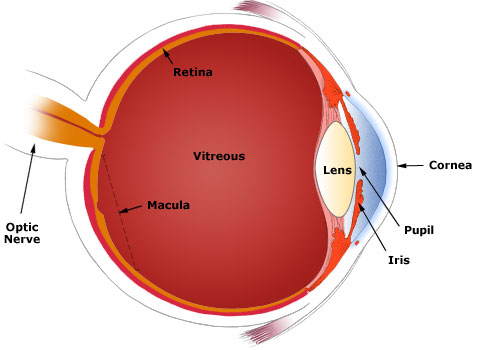
How the Eye Works
Light rays enter the eye through the cornea, the clear front "window" of the eye. The cornea bends the light rays so that they pass freely though the pupil. The Iris then works like a shutter in a camera. It either shrinks or enlarges depending on the amount of light entering the eye. The light then passes through the crystalline lens, this structure shortens or lengthens its width in order to focus light rays properly.
The light rays pass through the dense vitreous (fills the globe of eyeball and helps eye hold shape). The rays come to a sharp point at the retina. The retina acts like a film in a camera. It captures all the light rays, processing them into light impulses through millions of nerve endings, then sending these light impulses through over a million nerve fibers to the optic nerve where it is then carried the brain.